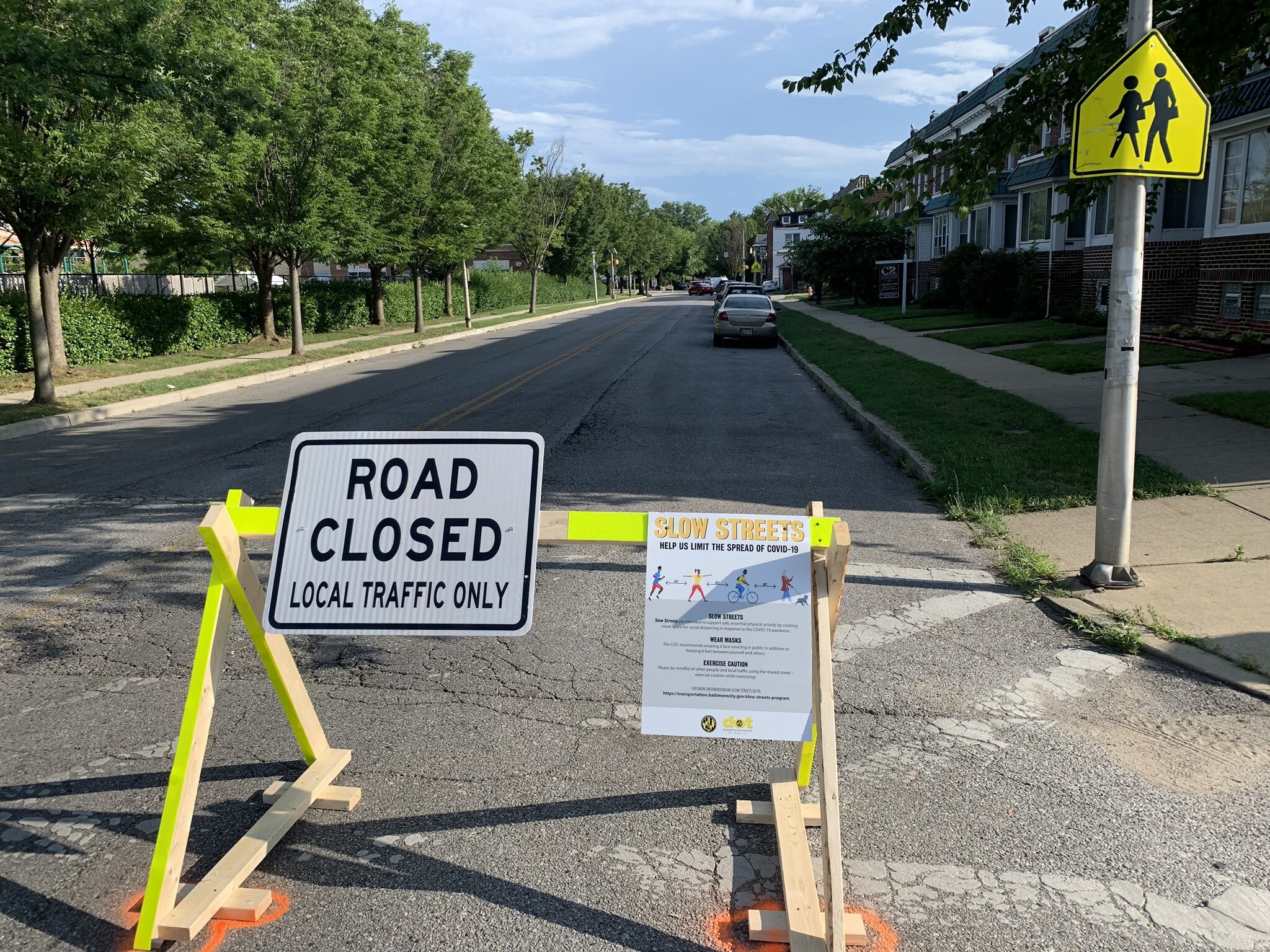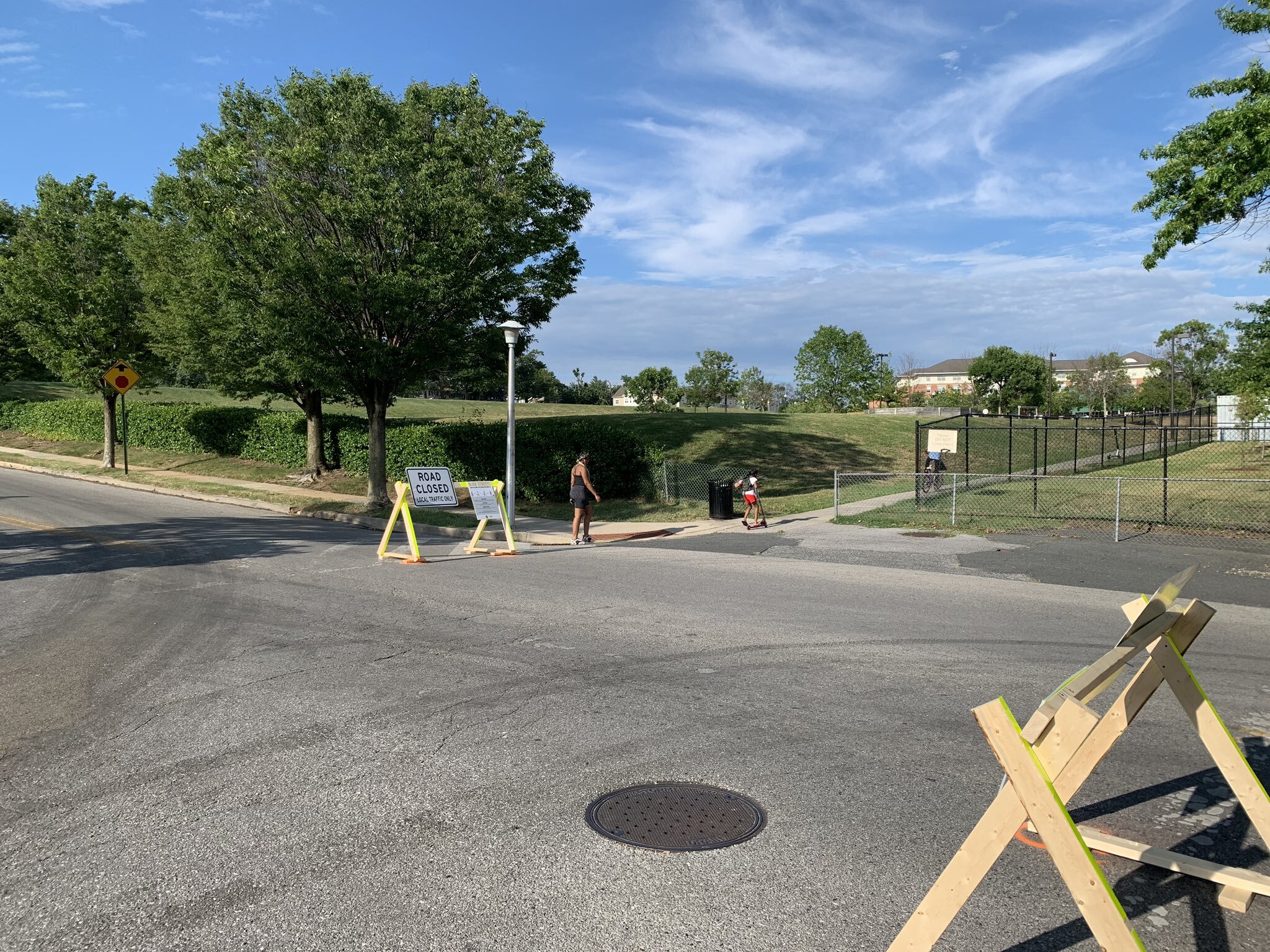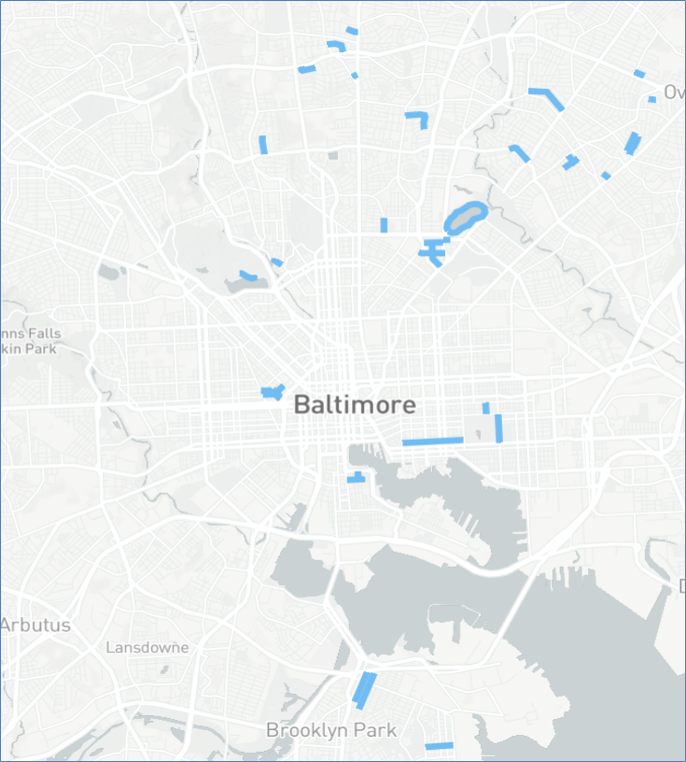On Monday, Baltimore City began rolling out a citywide #SlowStreets program, thanks to legislation introduced by Council President/Democrat nominee for Mayor Brandon Scott and passed unanimously by Baltimore City Council.
#SlowStreets are a public health response to the pandemic, closing streets to speeding traffic using the street as a short-cut while still allowing local traffic, deliveries, parking, and emergency vehicle access. The goal is to allocate more street space for people walking, biking, and recreating while traffic volumes are lower and physical distancing is required due to COVID-19.
#SlowStreets are being rolled out district-by-district, with about 8 miles to be completed this week. The City will continue installations until they meet the 25-mile minimum outlined in the legislation. Then, they will conduct an evaluation period to determine next steps, which could include swapping streets or expanding the program. In all, the city has identified more than 65 miles of candidate streets, and has taken numerous additional submissions from community members and community associations.
When we first called for #SlowStreets treatments in April, we recommended equitable implementation, robust community input, and transparent evaluation. While the legislation highlighted the need for equitable implementation, the mayor’s (ultimately unfulfilled) threat of veto forced BCDOT to begin this process late, which presented an additional barrier to robust community input.
We will continue to monitor implementation of #SlowStreets, and encourage Baltimore City Department of Transportation to work with advocates and community partners to program #SlowStreets so neighbors understand the purpose of the re-allocated space and can fully participate in the benefits that additional space provides.
The National Association of City Transportation Officials has released a guide for Streets for Pandemic Response and Recovery that details potential programming for re-allocated street space. Baltimore City has taken many of these recommendations into account for programming outdoor dining and retail spaces through Design for Distancing. We need a similar focus on these residential installations, and real resources for communities so they can utilize these spaces safely for physically distanced play, outdoor schooling, community gathering, protest, and more.
Other cities have used the #SlowStreets opportunity to count residents for the Census, distribute meals to seniors and youth, provide pop-up health services and COVID testing, and create spaces for play when parks or playgrounds are not nearby.
We hope Baltimore City will use this as an opportunity to think comprehensively about “Complete Streets” and use a multi-agency approach to ensure the success of #SlowStreets through programming and subsequent evaluation.









